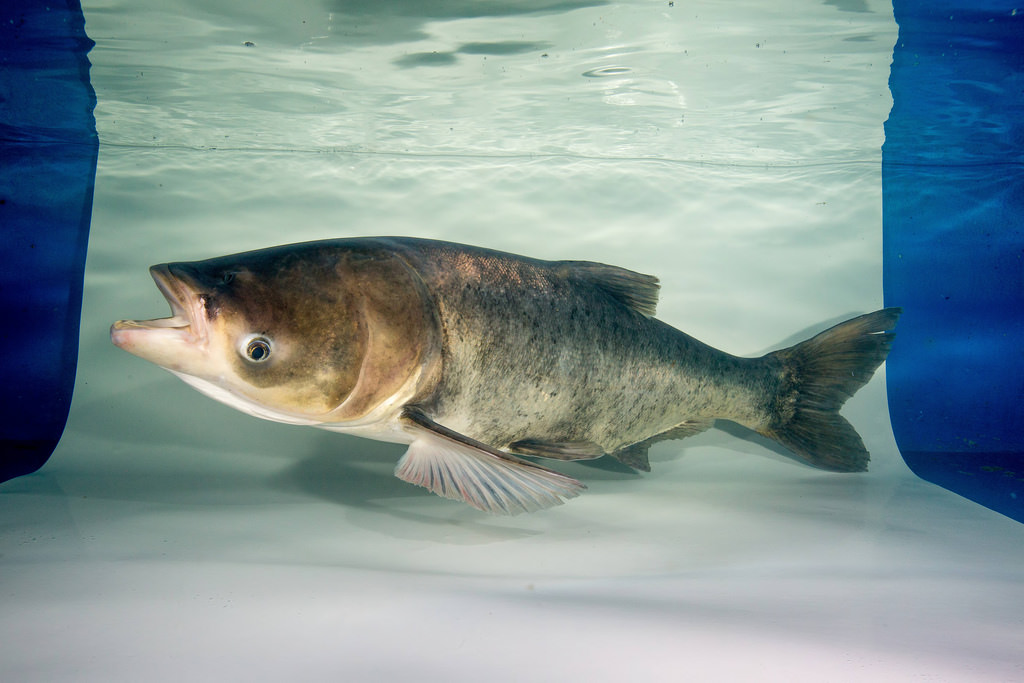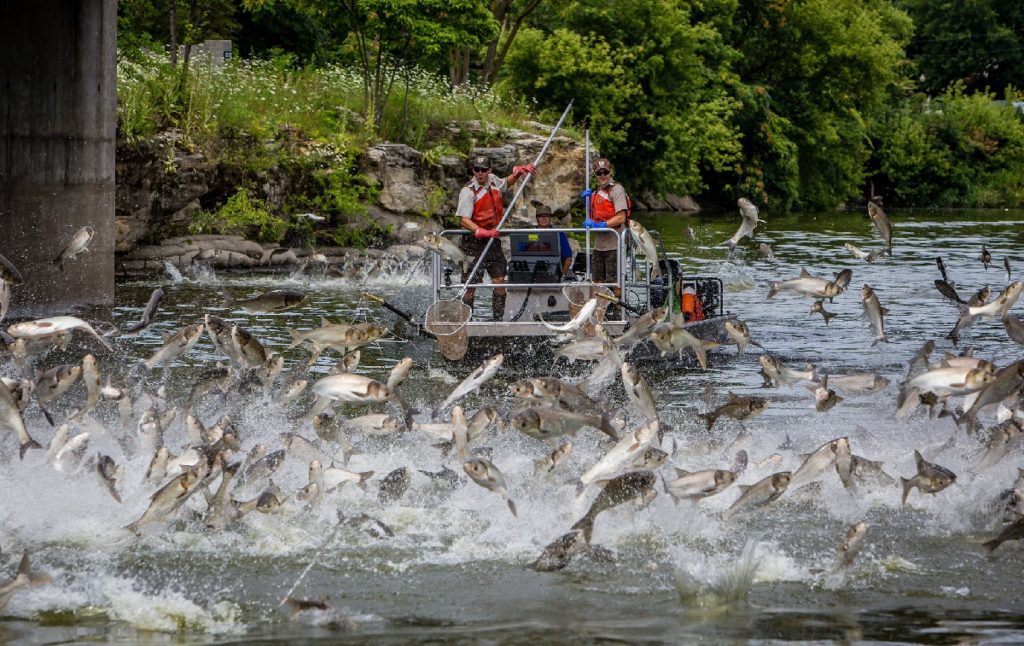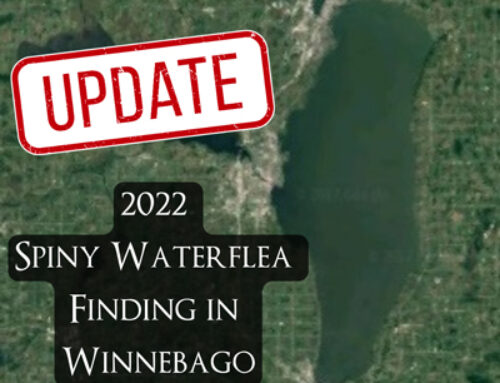Every month, we put a spotlight on an aquatic invasive species (AIS). This month, it’s all about the Asian Carp! Check it out!
Asian Carp: Bighead (Hypophthalmichthys nobilis), Silver (H. molitrix), Grass (Ctenopharyngodon idella), and Black (Mylopharyngodon piceus) Carp
Asian carp are most often first experienced by the public when they see videos of fish leaping out of the water as they become startled from boat engines in invaded waterbodies. There have been numerous news stories over the years about Asian carp and the Chicago Sanitary and Ship Canal. These fish are predominantly silver carp, one of four non-native Asian carp species that are currently found in North America; bighead, grass, and black carp. Introduced in the 1960s (grass carp) and the 1970s (other three species), Asian carp were brought to the United States for use in aquaculture but flooding of aquaculture ponds allowed these fish to invade the Mississippi River watershed. Silver and bighead carp feed on plankton while grass carp eat aquatic vegetation and black carp eat mollusks.

Adult Bighead carp. Photo: Ryan Hagerty
Asian carp have increased their range throughout the Mississippi River watershed ever since they were accidentally introduced. Two of the Asian carp species are moving closer to the Great Lakes. Silver and bighead carp are moving up the Illinois River toward the Chicago Area Waterways System. If silver carp become established in the Great Lakes, boaters will have to contend with these fish and the potential damage they can cause to boats or humans as they jump out of the water when disturbed by boat motors.
In addition, these fish could have a tremendous influence on the Great Lakes ecosystem. If these carp become established in the Great Lakes, native species will most likely be impacted either directly (through competition for food) or indirectly (through changes to the food web caused by Asian carp). Since both the bighead and silver carp feed on phytoplankton, they compete directly with forage fish such as shad, shiners, and many other young fish. While it might seem that a reduction in phytoplankton would be beneficial (water clarity increases), the rest of the food web will be impacted including a potential reduction in other fish species. In parts of the Mississippi River, silver and bighead carp have become dominant with some areas having these two fish species composing 90% of the fish biomass.
Bighead and silver carp are Prohibited in all Wisconsin counties.

Want to help? HELP PREVENT THE SPREAD!
Every time you come off the water, make sure to follow these steps to stop the spread of faucet snails and other aquatic invasive species:
* Inspect boats, trailers, push poles, anchors, and other equipment for attached aquatic plants or animals.
* Remove all attached plants or animals
* Drain all water from boats, motors, livewells and other equipment
* Never move live fish away from a waterbody
* Never release aquarium plants or animals into your local waterways
Follow the Fox Wolf Watershed Alliance’s Winnebago Waterways Program on our Winnebago Waterways Facebook page or @WinnWaterways on Twitter! You can also sign-up for email updates at WinnebagoWaterways.org.
Questions? Comments? Contact Chris Acy, the AIS Coordinator covering Fond du Lac, Calumet, Outagamie, and Brown and Winnebago Counties at (920) 460-3674 or chris@fwwa.org!
Winnebago Waterways is a Fox-Wolf Watershed Alliance program. The Fox-Wolf Watershed Alliance is an independent nonprofit organization that identifies and advocates effective policies and actions that protect, restore, and sustain water resources in the Fox-Wolf River Basin.
All text from this article is from the Winnebago Waterways AIS Strategic Plan. Sources can be found in the AIS Strategic Plan document.
Photo Credit: Ryan Hagerty, Chris Acy





